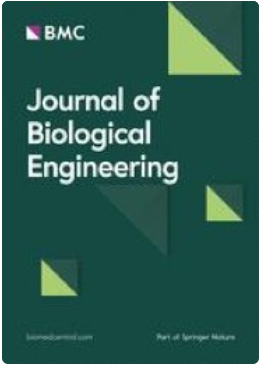用于革兰氏阴性菌标准化工作的荧光工具
IF 5.7
3区 生物学
Q1 BIOCHEMICAL RESEARCH METHODS
引用次数: 0
摘要
标准化和彻底特征化的基因工具是研究细胞过程的先决条件,以确保实验结果的可重用性和一致性。荧光蛋白(FPs)的发现是开发用于监测体内转录或蛋白质定位的遗传报告器的一个里程碑。通过对生物过程进行实时可视化和跟踪,荧光蛋白彻底改变了我们对细胞动态的理解。尽管取得了这些进步,但在合理使用 FPs 方面仍然存在挑战,特别是在其正确应用、蛋白质周转动态以及对细胞功能的意外破坏等方面。在这里,我们以革兰氏阴性模式生物肠炎沙门氏菌为代表宿主,系统地比较了 15 种 FPs,并通过关注关键参数(如信号与背景的比率和蛋白质稳定率)评估了它们在体内的性能。我们在基于质粒和基因组的系统中评估了四种蛋白质降解标签,我们的研究结果强调了引入降解标签分析时间敏感性细胞过程的必要性。我们证明,通过添加降解标签获得的动态变化会影响基于质粒的细胞间异质性,但不会影响基于基因组的报告。最后,我们利用标准和超分辨率荧光显微镜探究了 FPs 在活细胞蛋白质定位研究中的适用性。总之,我们的研究强调了仔细选择 FP 的重要性,并为开发改良的基因报告物铺平了道路,以提高革兰氏阴性菌及其他细菌中基于荧光的研究的可重复性和可靠性。本文章由计算机程序翻译,如有差异,请以英文原文为准。
Fluorescent tools for the standardized work in Gram-negative bacteria
Standardized and thoroughly characterized genetic tools are a prerequisite for studying cellular processes to ensure the reusability and consistency of experimental results. The discovery of fluorescent proteins (FPs) represents a milestone in the development of genetic reporters for monitoring transcription or protein localization in vivo. FPs have revolutionized our understanding of cellular dynamics by enabling the real-time visualization and tracking of biological processes. Despite these advancements, challenges remain in the appropriate use of FPs, specifically regarding their proper application, protein turnover dynamics, and the undesired disruption of cellular functions. Here, we systematically compared a comprehensive set of 15 FPs and assessed their performance in vivo by focusing on key parameters, such as signal over background ratios and protein stability rates, using the Gram-negative model organism Salmonella enterica as a representative host. We evaluated four protein degradation tags in both plasmid- and genome-based systems and our findings highlight the necessity of introducing degradation tags to analyze time-sensitive cellular processes. We demonstrate that the gain of dynamics mediated by the addition of degradation tags impacts the cell-to-cell heterogeneity of plasmid-based but not genome-based reporters. Finally, we probe the applicability of FPs for protein localization studies in living cells using standard and super-resolution fluorescence microscopy. In summary, our study underscores the importance of careful FP selection and paves the way for the development of improved genetic reporters to enhance the reproducibility and reliability of fluorescence-based research in Gram-negative bacteria and beyond.
求助全文
通过发布文献求助,成功后即可免费获取论文全文。
去求助
来源期刊

Journal of Biological Engineering
BIOCHEMICAL RESEARCH METHODS-BIOTECHNOLOGY & APPLIED MICROBIOLOGY
CiteScore
7.10
自引率
1.80%
发文量
32
审稿时长
17 weeks
期刊介绍:
Biological engineering is an emerging discipline that encompasses engineering theory and practice connected to and derived from the science of biology, just as mechanical engineering and electrical engineering are rooted in physics and chemical engineering in chemistry. Topical areas include, but are not limited to:
Synthetic biology and cellular design
Biomolecular, cellular and tissue engineering
Bioproduction and metabolic engineering
Biosensors
Ecological and environmental engineering
Biological engineering education and the biodesign process
As the official journal of the Institute of Biological Engineering, Journal of Biological Engineering provides a home for the continuum from biological information science, molecules and cells, product formation, wastes and remediation, and educational advances in curriculum content and pedagogy at the undergraduate and graduate-levels.
Manuscripts should explore commonalities with other fields of application by providing some discussion of the broader context of the work and how it connects to other areas within the field.
 求助内容:
求助内容: 应助结果提醒方式:
应助结果提醒方式:


